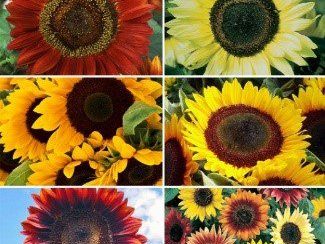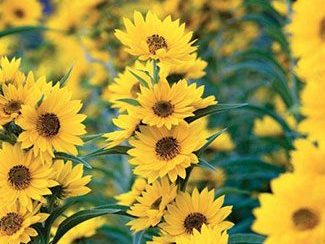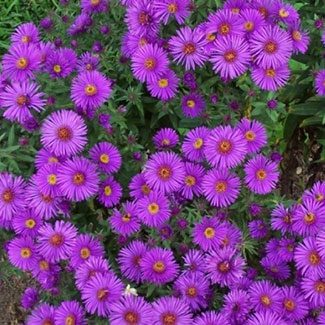Is your garden (and maybe the gardener) tired when fall rolls around? Well, it’s historically the most typical thing among gardeners to sort of give up after August. After all, you’ve already done a great job with your Tulips, Daffodils, Irises, Peonies, and maybe Roses, but that’s all about spring. Then you labored over your summer flowers like Rudbeckia Goldsturm, Phlox, the Echinaceas, and others, but by late August, they’re about gone too.
If you’re one of those gardeners who sort of gives up after summer, you’ve got a big treat in store. There is a book called “The Garden in Autumn” that is already a classic, and for my money, it’s one of the best gardening books ever. It’s by Allen Lacy, who was a very interesting guy who taught Philosophy at NYU, but lived in New Jersey with his wife, Hella. He also wrote for awhile for the Gardening Section of the New York Times. He’s no longer with us, but luckily for you, his books are.
This man was not only a gardening expert, he was a super writer, and an endlessly enthusiastic gardener when it came to fall flowers. He insists there are whole groups of flowering plants and perennials available for fall bloom, but few gardeners plant them, and he’s right.
Here are a few of his recommendations that I’ve used, and over the years, I’ve expanded my flower garden’s bloom season for months, thanks to Dr. Lacy.

Believe me, after reading “The Garden in Autumn,” you’ll be aware that flowers in fall are not limited to mums!
Some of Dr. Lacy’s recommendations:
Sunflowers
Take a look at Eden Bros. 36 kinds of sunflowers, and you’ll get it. Imagine some of these beauties in your fall garden. Most are annuals, so just plant clumps of the seeds in spring here and there, mostly at the back of your garden, since most are relatively tall. They’re famously easy to grow in any sunny spot, so there’s no trouble starting these seeds. Just plant them in spring where you want the flowers in fall. I’d avoid the classic farmyard variety, since it not only grows up to 10 ft, but it also loses leaves late in summer, so when the huge flowers appear, the plants usually have some dying leaves on them, and that doesn’t look so great. But the others, mostly bred for the cut flower trade are great for gardens. And look at the colors! Red, yellow, and beautiful ones with red and yellow pinwheels. Some of these are summer bloomers, but most all bloom into fall. These will really dress up your garden in late season. All you have to do is put in some seed in spring.

Perennial Sunflowers
Allen Lacy runs on and on about perennial sunflowers in his famous book. There are several, and one of the most popular is Maximilian’s Sunflower. Dr. Lacy insists these beautiful flowers are some of the most underused in the plant kingdom. Unlike the annuals, they aren’t tall plants with just a big flower or two at the top. Instead, most of the perennial types are tall plants with sprays of smaller blooms, beautiful waving in an autumn breeze. The flowers on this sunflower are the size of black-eyed susans—lots of smaller flowers for weeks. A packet of seeds for this beauty is just 2.95. Now there’s a great investment!

This beauty is actually a wildflower from the American Plains, and tough as nails. Plant them in spring and look what you’ll have every fall! Yes, they’re tall, growing from about 5 to 7 feet by the time they bloom, but you’ll love their big stems with of a flurry of buttery gold blooms late in the season when most of your other flowers are gone. Planted with purple asters, they’re a knockout. All you’ll need is a few plants for a spectacular show.
Asters
Eden Bros. has 20 different aster seeds to choose from. They are tall and short, and in a big choice of colors. But my favorite will always be The New England Aster, shown at right.
My grandmother lived in New England, and when we’d visit in fall, out behind her house was a whole field of these spectacular wildflowers in bloom. They grow on stiff stems, and when fall arrives, huge bowers of big bright electric purple flowers appear. They’re as perennial as oaks, so I knew whenever we’d go there in September or October, I’d have a great time out in the field cutting big bouquets.

Today, I know the name of this great plant has nothing to do with where it will grow well. They’re perfectly happy anywhere there are winter freezes. So all you have to do to establish these permanent perennial flower factories in your garden is plant a few seeds of them next spring. They’ll be there for you forever.
Cosmos
Among the few annuals that wait until fall for full bloom is cosmos. Once I saw a whole 2-acre field planted with them, and what a vision that was.
Just plant the seeds in spring, and their ferny foliage will be beautiful for you all summer, and then in late summer, the flowers will start, and not stop until frost. They grow up to 4 or 5 ft. tall, so put your patch of them at the back of the garden. When they bloom, you’ll not only enjoy them outside, but be able to cut whole long stems of the gorgeous flowers for big fall bouquets inside.
I like the classic pink variety, which is well-named Sensation , but today there all kinds and colors to choose from, even bi-colors.

Another one I always plant is called Sulphur Cosmos. It’s shorter than the common pink ones and has stunning orange flowers.
These plants are absolutely foolproof to grow, as long as you plant the seeds in spring and they have sun. They’re originally wildflowers from desert areas, so even if you’re not too careful to water them all summer, they’ll be just fine. And magnificent in fall.
A few words from Allen Lacy about gardening in Fall, which he calls “The Neglected Season.”
“For many of us…our fall gardens look sad and forlorn while we labor with the chores. But it need not be so at all. Many of us have learned to be springtime and summertime gardeners only, paying almost no heed to fall. We may, with somewhat greater difficulty, learn to be autumn gardeners as well. A garden can be its very best in autumn.
“Certainly in most of America, the best time to be in the garden is in the fall, even if it’s only to do the chores. It is a kindly season, and a forgiving one, with its own special rhythms…The summer may have been humid and sweltering, but in autumn it becomes a pleasure to go outside and work.
“Thus far, I have stayed with the more obvious advantages of late-season gardening, reflections on autumn by a spring and summer gardener grateful for the lull among weeds, ready to kneel down and plant my spring bulbs. But some Septembers ago, I noticed that something had happened in my garden, a shifting of balance…that tilted the plot of land I till toward autumn. I had accumulated perennials and shrubs with a prolonged period of bloom, plants whose flowers lingered well into fall… It was these plants themselves that taught me the overlooked possibilities of the season.”